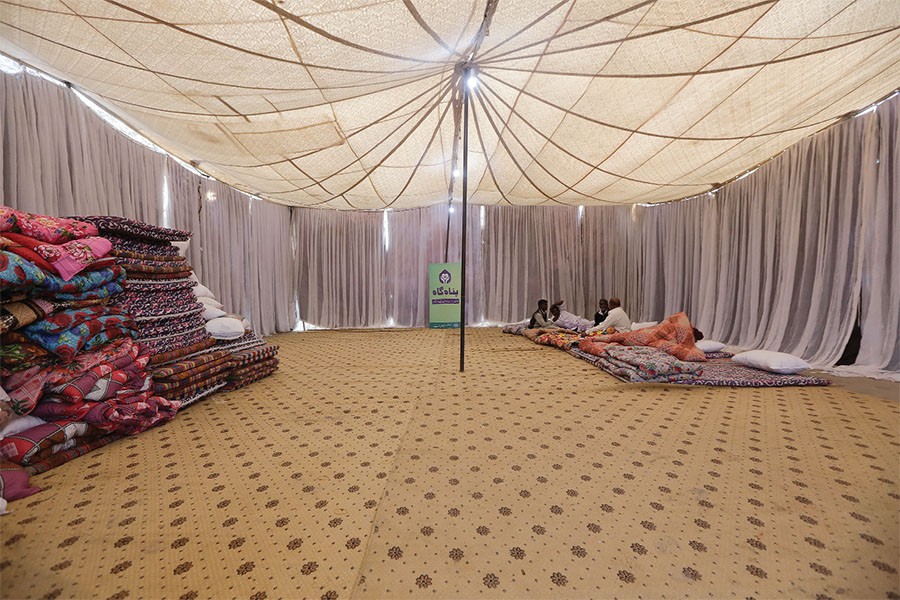
Until the completion of the proper panah gahs, the temporary and makeshift shelters are proving to be a blessing for those without a roof over their heads

As the clock strikes 10, a man steps inside the Lori Adda’s Administration Block. After being carefully checked by a police officer, the man (dressed in haphazard clothes) approaches the personal sitting behind a desk where he is asked to furnish his national identity card (CNIC).
Rummaging through his pockets he produces the card and hands it over to the social welfare department personnel. He is then asked a series of questions, on matters pertaining to his hometown and current business in Lahore. Satisfied, the person notes down the check-in time on a register containing information of other residents of the makeshift ‘panah gah’ (shelter).
Before being directed towards the numerous blankets spread out across the floor -- host to other inhabitants -- the man is asked if he needs anything to eat. Politely, he refuses and says "Shukriya," before tucking himself in and drifting off.
According to the UN estimates, presently 20 million citizens of Pakistan are homeless and bereft of a shelter they could call home. Last year, on November 10, Prime Minister Imran Khan laid the foundation stone of the first panah gah in front of the Lahore Railway Station. Two weeks later, five state-owned, selected stretches of land had become sites for the panah gahs. The Lahore Development Authority (LDA) was nominated as the executing agency with the Social Welfare department taking reins of the facilities for operation and maintenance.
The homeless reside in the major hubs of Lahore, and are urgently in need of a safe place to sleep overnight along with other basic necessities. At Data Darbar, the construction of a panah gah is swiftly underway, and the same can be said of the one at Lahore Junction (Railway Station), despite a few litigation issues.
Spread out over two kanals each, the minimalistically designed shelter homes are expected to cater to around 128 males and 16 females. At Sabzi Mandi, the brick work is in progress for the 1 kanal shelter home that shall cater to 93 males and 27 females. At Badami Bagh Bus Stand/Lori Adda, progress of the panah gah has been comparatively slower, owing to NOC issues.
LDA Spokesperson Sohail Janjua says the construction of panah gahs is being given utmost attention and priority. He admits that the project is experiencing some hiccups owing to the irregular weather patterns, but the panah gahs are expected to be completed as swiftly as possible.
The temporary and makeshift shelters, until the completion of the panah gahs, are proving to be a blessing for those without a roof over their heads. With the drop in temperatures with each passing day, provision of any sort of refuge to those in need is commendable.
TNS learnt that the makeshift shelters operate from 6pm till 9am, all seven days of the week. Dinner and breakfast are provided, with room availability on first-come-first-served basis. In case of full capacity, the homeless are directed to check nearby makeshift shelters.
Furthermore, health officers routinely check up all residents and provide medicines to the ailing, from nearby pharmacies free of cost. District and police personnel are present to ensure the makeshift shelter homes continue to function without any hassle.
What with its stated mission to transform Pakistan into a social welfare state, the current elected government has made a lot of news. But only time will tell how successfully does it translate into practice. The construction of panah gahs in the city are, however, a step in the right direction. One hopes the vulnerable and disempowered can begin to feel like they belong in a place that they can also call home.